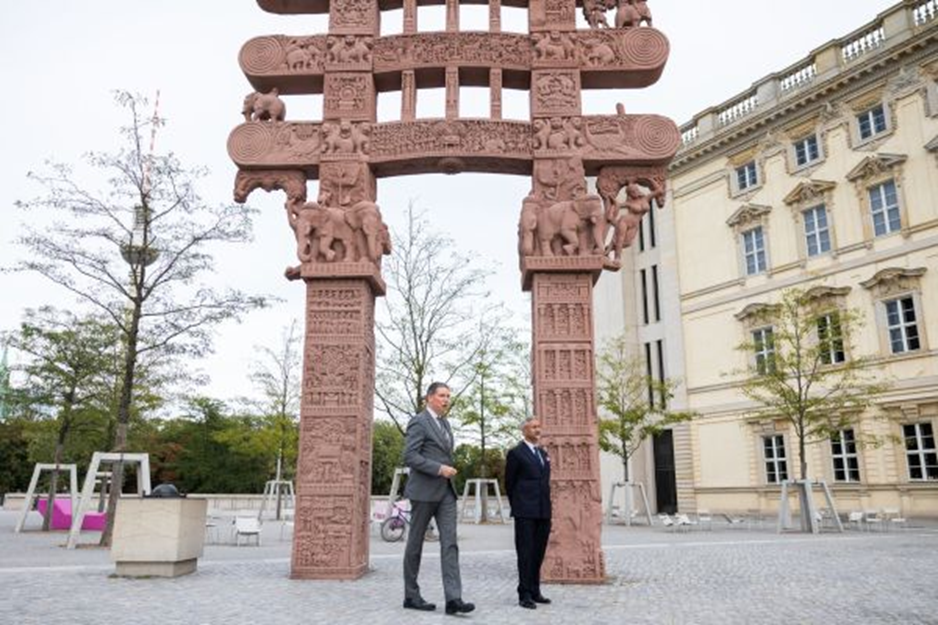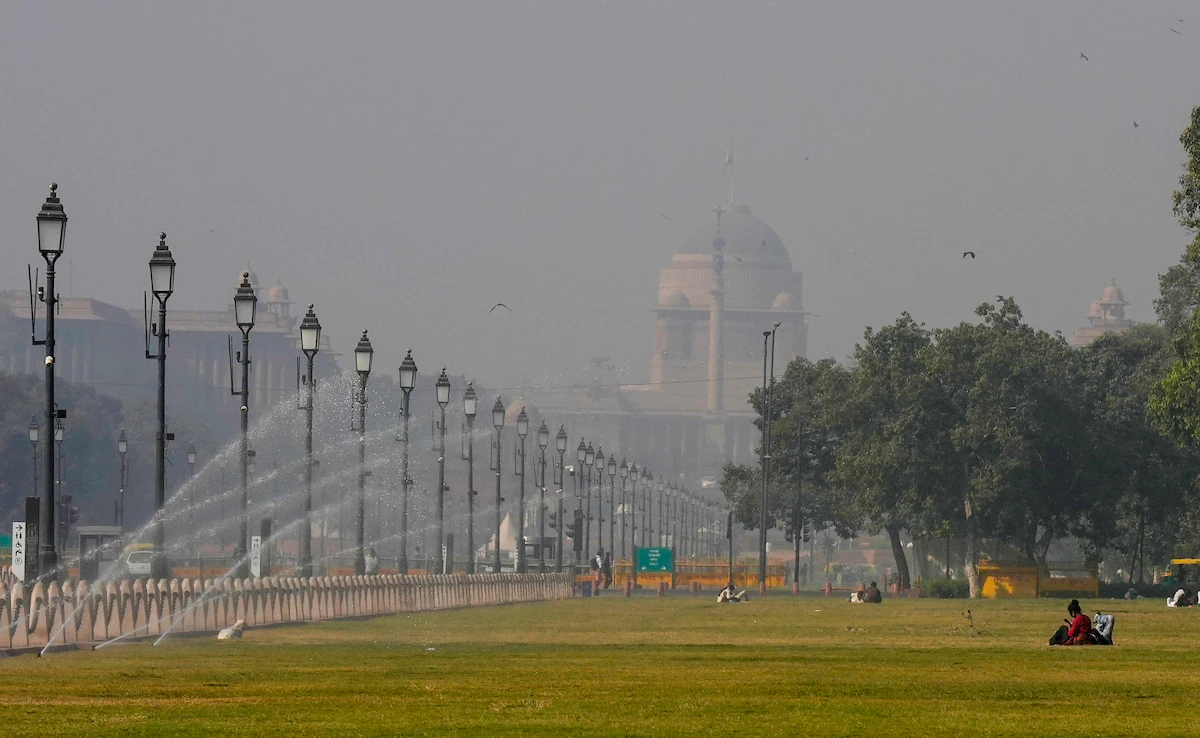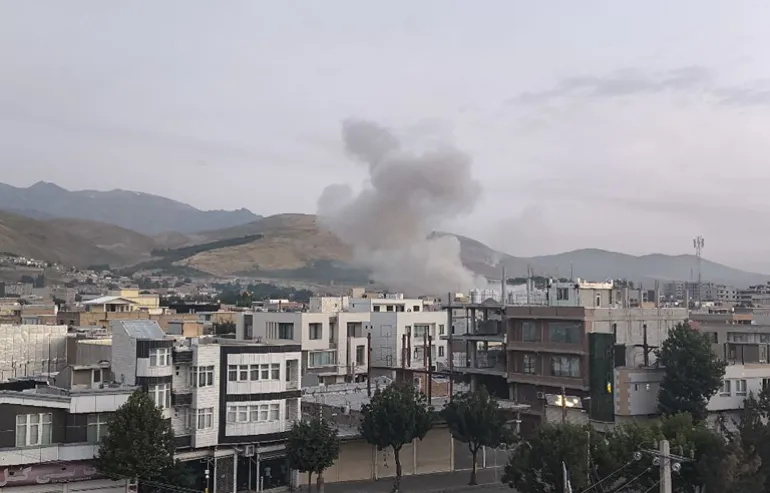- Courses
- GS Full Course 1 Year
- GS Full Course 2 Year
- GS Full Course 3 Year
- GS Full Course Till Selection
- Answer Alpha: Mains 2025 Mentorship
- MEP (Mains Enrichment Programme) Data, Facts
- Essay Target – 150+ Marks
- Online Program
- GS Recorded Course
- Polity
- Geography
- Economy
- Ancient, Medieval and Art & Culture AMAC
- Modern India, Post Independence & World History
- Environment
- Governance
- Science & Technology
- International Relations and Internal Security
- Disaster Management
- Ethics
- Current Affairs
- Indian Society and Social Issue
- NCERT- Science and Technology
- NCERT - Geography
- NCERT - Ancient History
- NCERT- World History
- CSAT
- 5 LAYERED ARJUNA Mentorship
- Public Administration Optional
- ABOUT US
- OUR TOPPERS
- TEST SERIES
- FREE STUDY MATERIAL
- VIDEOS
- CONTACT US
Great Stupa of Sanchi from Ashokan Times to Now
Great Stupa of Sanchi from Ashokan Times to Now

India’s External Affairs Minister, S. Jaishankar, recently visited a replica of the East Gate of the Great Stupa of Sanchi, displayed in front of the Humboldt Forum Museum in Berlin. Unveiled in December 2022, this replica is a 1:1 reproduction, standing approximately 10 meters high and 6 meters wide, and weighing around 150 tonnes.
Overview of the Great Stupa of Sanchi
Definition and Significance of a Stupa:
- A stupa is a Buddhist commemorative monument that typically houses sacred relics of the Buddha or other venerated figures.
- The stupa’s form is typically hemispherical, derived from pre-Buddhist burial mounds found in India.
Historical Context and Construction:
- The Great Stupa of Sanchi was commissioned by Emperor Ashoka in the 3rd century BCE.
- It is the largest and oldest structure in a complex of Buddhist monuments at Sanchi, which also includes stupas, temples, and monasteries. Some of the most recent constructions at Sanchi date back to the 12th century CE.
- Debala Mitra, former director-general of the Archaeological Survey of India (ASI), highlighted Sanchi’s importance in studying the evolution of Buddhist art and architecture.
Construction Oversight:
- The stupa was built under the supervision of Ashoka’s wife, Devi, from Vidisha, supported by the local mercantile community of Vidisha.
Gateways of the Great Stupa
Architectural Features:
- The stupa itself is a plain hemispherical mound crowned by a chhatra (parasol).
- The standout features are the four ornamental gateways (toranas), each oriented to one of the cardinal directions.
- Constructed in the 1st century BCE during the Satavahana dynasty, these gateways are built with two square pillars supporting a superstructure of three curved architraves.
Decorative Elements:

- The pillars and architraves are adorned with intricate bas-reliefs and sculptures.
- They depict scenes from the Buddha’s life, stories from the Jataka Tales, and various Buddhist symbols. The gates include representations of shalabhanjika (fertility emblems), elephants, winged lions, and peacocks.
- The art is noted for its rhythm, symmetry, and decorative beauty, though it does not depict the Buddha in human form, consistent with the artistic conventions of the time.
Painted Toranas:
- Originally, the toranas and the balustrade surrounding the stupa were painted, enhancing their visual impact.
The East Gate and Its Replicas
Historical Discovery and Restoration:
- The Sanchi complex was rediscovered in 1818 by British officer Henry Taylor. Alexander Cunningham, who later founded the ASI, conducted the first formal survey and excavations in 1851.
- The site faced frequent damage from treasure hunters and amateur archaeologists before restoration efforts began. ASI director-general John Marshall oversaw the restoration in the 1910s, funded by the begums of Bhopal.
Plaster Casts and European Display:
- During the late 19th century, the East Gate was cast in plaster by Lieutenant Henry Hardy Cole for the Victoria and Albert Museum. This plaster cast was widely reproduced and displayed across Europe.
- A plaster cast was displayed at the Königliches Museum für Völkerkunde Berlin from 1886, and an artificial stone cast was created in 1970.
Berlin Replica:
- The latest Berlin replica was created using 3D scanning, modern robotics, and the skills of both German and Indian sculptors, based on enlarged photos of the original torana.
- The upper architrave of the East Gate represents the seven Manushi Buddhas. The middle architrave depicts the Great Departure of Siddhartha, while the lower architrave shows Emperor Ashoka’s visit to the Bodhi tree.
Conclusion
The Great Stupa of Sanchi stands as a monumental symbol of ancient Buddhist architecture and devotion. Its journey from a revered ancient monument to a globally recognized heritage site underscores its enduring significance. The creation and display of the replica East Gate in Berlin highlight the universal appreciation of Sanchi’s artistic and historical value, reflecting ongoing efforts to preserve and celebrate global cultural heritage.
Must Check: Best IAS Coaching In Delhi
UPSC Prelims Result 2024 Out: Expected Cut Off & Other Details, UPSC Prelims 2024 Answer with Explanation, Daily Prelims Quiz, Daily Current Affairs, MONTHLY CURRENT AFFAIRS TOTAL (CAT) MAGAZINE, Best IAS Coaching Institute in Karol Bagh, Best IAS Coaching Institute in Delhi, Daily Mains Question Answer Practice, ENSURE IAS UPSC Toppers, UPSC Toppers Marksheet, Previous Year Interview Questions, UPSC Syllabus




